
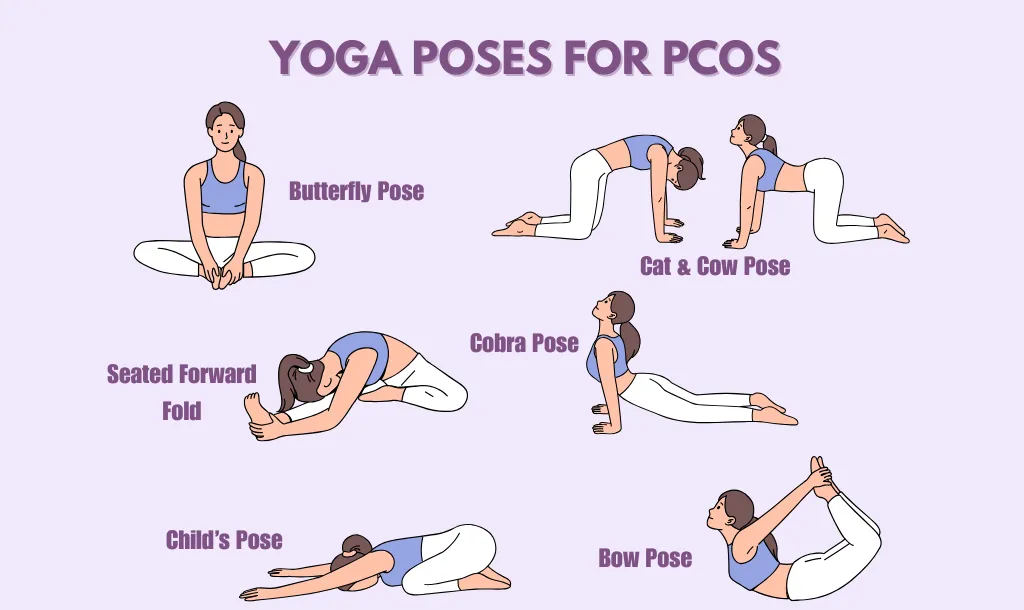
Polycystic Ovary Syndrome (PCOS) affects 6–13% of women of reproductive age, yet nearly 70% remain undiagnosed. As a hormonal and lifestyle disorder, PCOS can disrupt your energy levels, mood, menstrual cycle, weight, and fertility. Common signs include irregular periods, painful cramps, acne, unwanted hair growth, weight gain, and anxiety.
While medications and hormone therapy can help manage symptoms, they often come with side effects and don’t address the underlying imbalances. That’s where yoga for PCOS comes in, offering a gentle, effective, and natural practice that supports hormonal balance, fertility, and emotional well-being.
Keep reading to discover 10 science-backed yoga poses for PCOS and how to build your PCOS yoga routine.
Want to learn more about the specific benefits of yoga for women? Read this article!
Polycystic Ovary Syndrome (PCOS) is a hormonal disorder that affects how the ovaries function, disrupts metabolic health, and can interfere with fertility. It often leads to irregular or missed periods, the development of small ovarian cysts, elevated androgens (male hormones), and other physical and emotional symptoms.
The root causes of PCOS are multifactorial and may involve:
Insulin resistance (seen in up to 70% of PCOS cases)
Excess androgens (testosterone)
Genetic predisposition
Lifestyle factors like chronic stress, poor sleep, and inflammatory diets
Common symptoms of PCOS include:
Reproductive Symptoms:
Irregular or missed periods
Fertility issues, or difficulty conceiving
Ovarian cysts
Metabolic Symptoms:
Weight gain (especially around the belly)
Trouble losing weight
Insulin resistance and increased risk of type 2 diabetes
Physical Symptoms:
Acne and oily skin
Excessive hairfall or thinning
Excess facial or body hair (hirsutism)
Emotional Symptoms:
Anxiety, depression, and mood swings
Low self-esteem and body image issues
Poor sleep quality
Here’s how it supports your PCOS journey on multiple levels:
Hormonal Regulation
Lowers cortisol, the stress hormone that worsens insulin resistance and disrupts sleep
Improves insulin sensitivity naturally
Balances reproductive hormones like estrogen and progesterone
Physical Benefits
Helps manage weight through gentle, consistent movement
Boosts circulation, especially to the pelvic and abdominal areas
Aids digestion and reduces bloating
Mental & Emotional Relief
Reduces anxiety and depression through breathwork and mindfulness
Promotes body awareness and boosts self-esteem
Creates space for emotional release and inner calm
These yoga asanas for PCOS target the hormonal imbalance, fertility challenges, and stress—three key contributors to the condition. Each pose is beginner-friendly, modifiable, and backed by therapeutic benefits. Practicing these regularly can help restore cycle balance, improve fertility, and reduce PCOS symptoms naturally:
Butterfly Pose
Bow Pose
Garland Pose
Legs Up The Wall Pose
Supported Bridge Pose
Locust Pose
Child’s Pose
Seated Forward Fold
Cat-Cow Pose
Cobra Pose
These poses support hormonal regulation by stimulating the endocrine glands, improving circulation, and calming the nervous system. Ideal for reducing symptoms like irregular periods, acne, and fatigue.
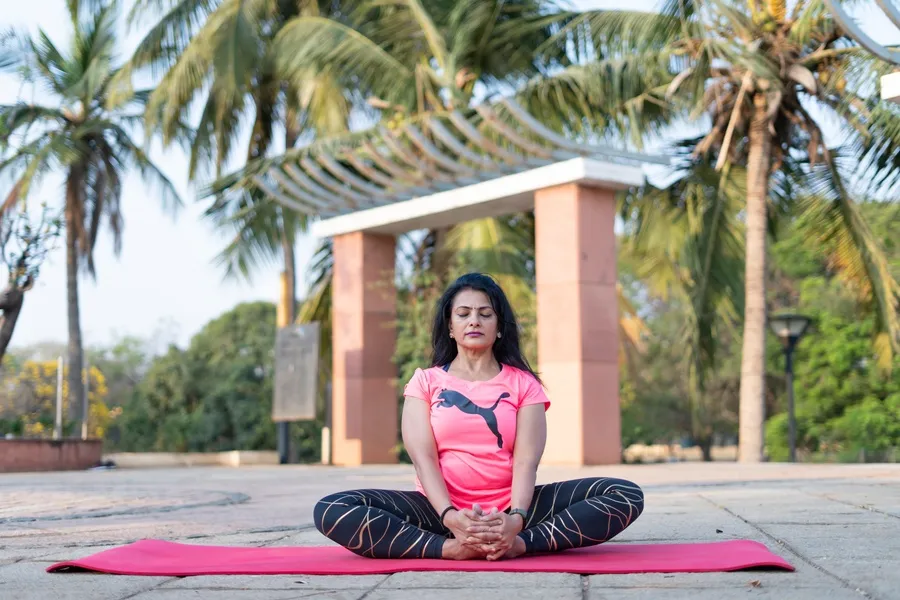
This seated hip opener stimulates the ovaries, improves circulation in the pelvic region, and relieves tension in the reproductive organs. It’s a gentle way to support hormonal regulation and menstrual health.
Sit with your spine tall and legs extended forward.
Bring the soles of your feet together, allowing your knees to drop out to the sides.
Hold your feet with your hands and bring them closer toward the pelvis.
Lengthen the spine and, if comfortable, begin to fold forward from the hips, keeping the back flat.
Hold for 1-3 minutes, then gently release.
Modifications:
Place yoga blocks or cushions under your knees for support.
Sit against a wall to keep your spine upright if folding forward feels too intense.
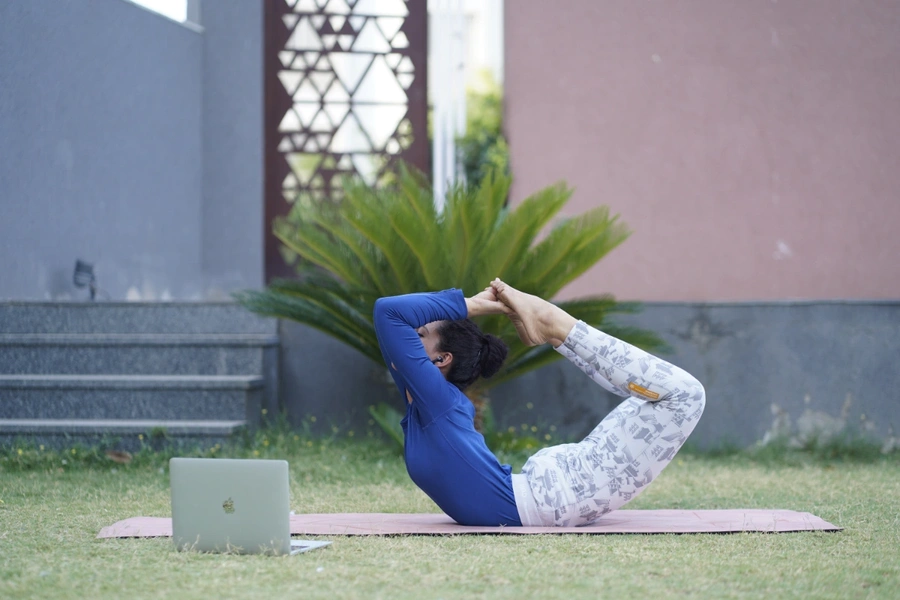
This backbend energizes the endocrine glands, stretches the entire front body, and supports digestion and adrenal health, making it beneficial for hormone balancing and metabolic function.
Lie on your belly with arms alongside your body.
Bend your knees and reach your hands back to grasp your ankles.
On an inhale, lift your chest and legs off the ground, drawing your shoulder blades together.
Gaze forward, keeping your breath steady.
Hold for 15-30 seconds, repeating 2-3 times.
Modifications:
Use a yoga strap if you can't reach your ankles.
Focus on lifting the chest more than the legs if you have lower back discomfort.
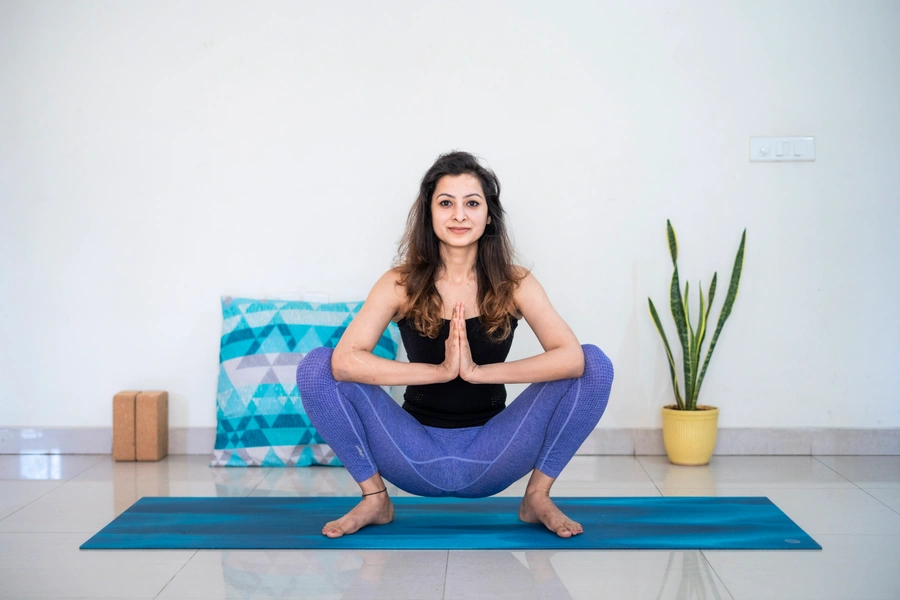
A powerful hip opener that stimulates pelvic organs, grounds the nervous system, and improves elimination and digestion.
Stand with feet wider than hip-width apart, toes turned slightly out.
Bend your knees and lower into a deep squat.
Bring your palms together at the heart center and press your elbows into the knees to open the hips.
Hold for 1-2 minutes, keeping the breath steady.
Modifications:
Sit on a yoga block for support.
Keep heels lifted with a rolled towel under them if needed.
These asanas boost blood flow to the reproductive organs, reduce inflammation, and create an internal environment that supports ovulation and conception. Perfect for women with PCOS trying to conceive naturally.
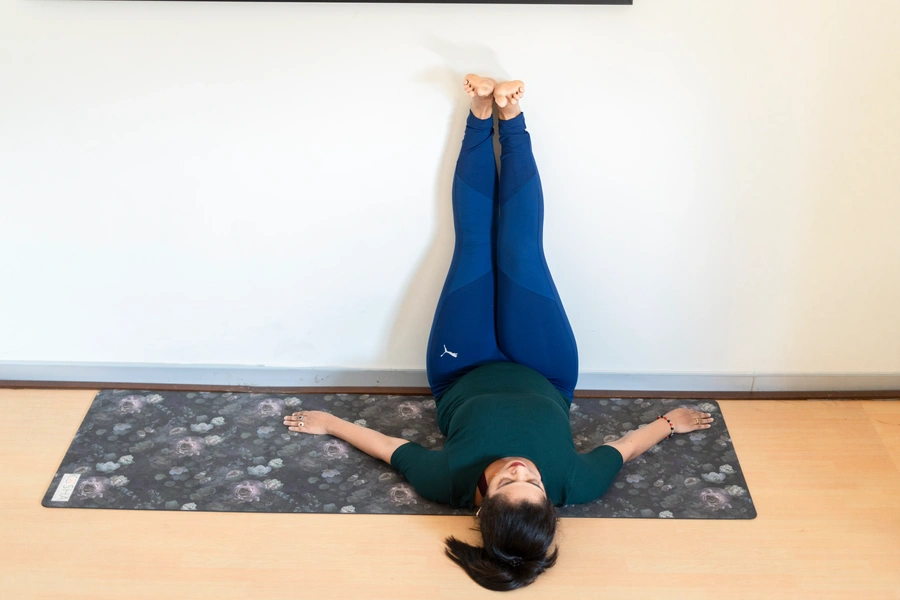
This restorative inversion boosts circulation to the ovaries and uterus, calms the nervous system, and reduces lower body inflammation—all essential for supporting fertility.
Sit sideways next to a wall, with one hip touching it.
Gently swing your legs up the wall as you lie back onto the floor or a yoga mat.
Adjust so your buttocks are close to or slightly away from the wall, depending on flexibility.
Rest arms by your sides, palms facing up.
Hold for 3-5 minutes, focusing on long and slow belly breaths.
Modifications:
Place a bolster or folded blanket under your hips for gentle elevation.
Cover your eyes with a cloth or use a pillow for neck support.
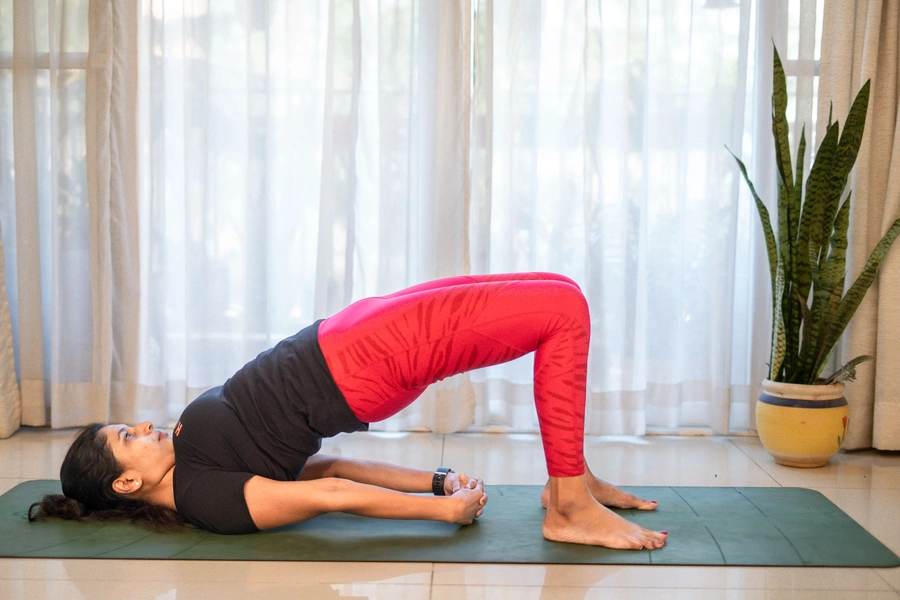
This gentle backbend opens the hips, improves pelvic circulation, and stimulates reproductive glands. It also soothes the nervous system, lowering stress and inducing calm.
Lie on your back with knees bent, feet hip-width apart, and close to your hips.
Lift your hips and slide a block, bolster, or cushion under your sacrum (the flat area just above your tailbone).
Rest your weight completely onto the support and relax.
Inhale slowly into the chest or belly, and release all tension and anxiety as you exhale.
Hold for 2-3 minutes, and gently release.
Modifications:
For a more active version, engage the glutes and thighs to lift without support.
Arms can be extended overhead or stay relaxed by your sides.
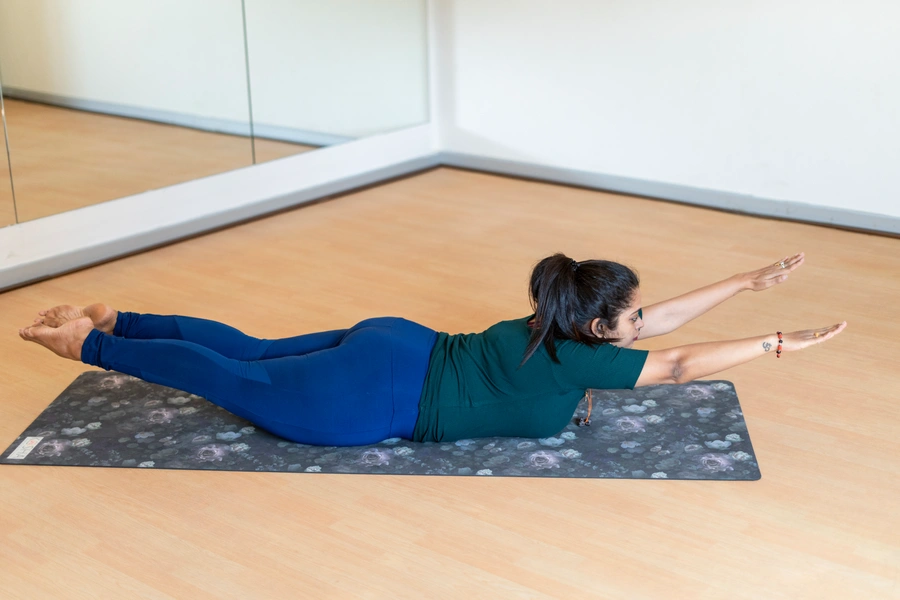
Locust Pose strengthens the lower back, core, and pelvic floor, improves circulation to the abdominal and reproductive organs, and stimulates the thyroid and adrenal glands. It also enhances metabolic function, posture, and energy levels—all while supporting hormonal balance.
Lie flat on your stomach, legs extended, and arms alongside your body with palms facing up.
On an inhale, lift your chest, arms, and legs off the ground simultaneously.
Keep the neck neutral, gaze slightly forward and down.
Squeeze your shoulder blades together and engage your glutes and inner thighs.
Hold the pose while breathing deeply for 20–30 seconds, then exhale to release.
Repeat 3 times, with rest in between.
Modifications:
Keep your hands under your thighs for extra lift.
Perform the pose with only the upper or lower body lifted if full engagement is challenging.
These poses lower cortisol levels, enhance digestion, and activate the body’s relaxation response. A calmer nervous system leads to better hormonal balance and improved metabolic health.

A deeply calming posture that stimulates the parasympathetic nervous system—our rest-and-digest mode. Perfect for lowering cortisol and restoring adrenal balance, which is key to managing PCOS.
Kneel on the floor with your big toes touching and knees wide apart.
Sit back on your heels and fold your torso forward, extending arms in front or placing them by your sides.
Rest your forehead on the mat, a block, or a cushion.
Breathe into the lower belly and back ribs, releasing tension on every exhale.
Hold for 1-2 minutes, then gently release.
Modifications:
Place a bolster or pillow under your torso for added comfort.
Keep your knees closer together for more support in the lower back.
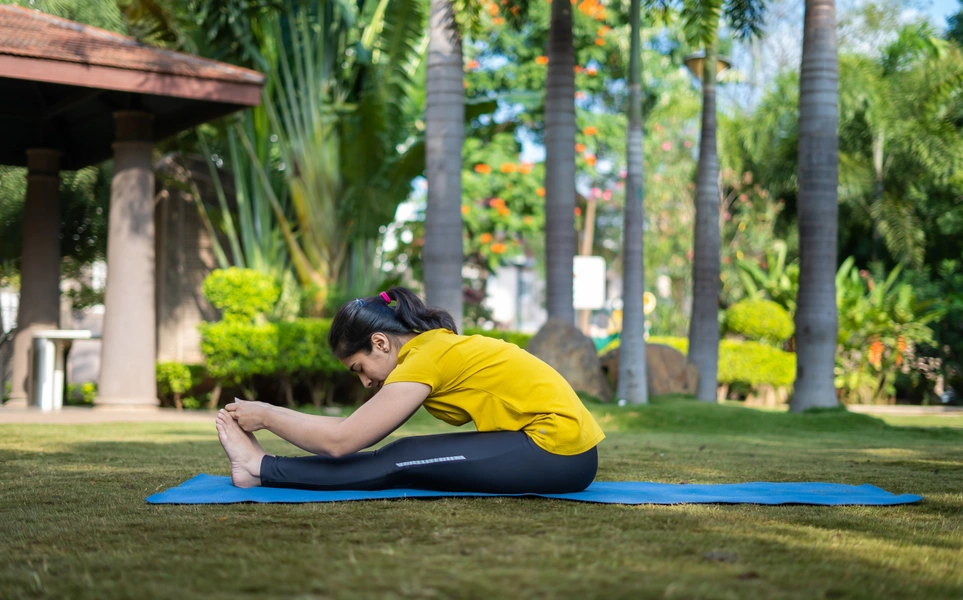
This forward fold supports digestion, massages abdominal organs, and relieves anxiety. It encourages internal focus, which helps build a mindful relationship with the body.
Sit with legs extended in front of you.
Inhale to lengthen the spine, exhale to fold forward from the hips.
Reach for your feet, ankles, or shins—whichever is accessible.
Hold for 1-2 minutes, then release.
Modifications:
Bend your knees slightly and place a rolled blanket under them.
Use a strap around the feet if you can’t reach.
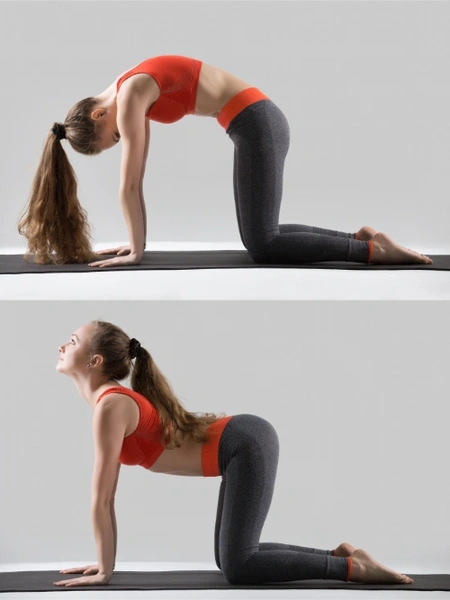
This dynamic flow improves spinal mobility, stimulates digestion, and helps release tension in the lower back and belly.
Begin in a tabletop position (hands under shoulders, knees under hips).
On an inhale, drop the belly, lift the tailbone and chest (Cow Pose).
On an exhale, round the spine, tuck the chin, and draw the belly in (Cat Pose).
Continue for 8-10, moving with your breath.
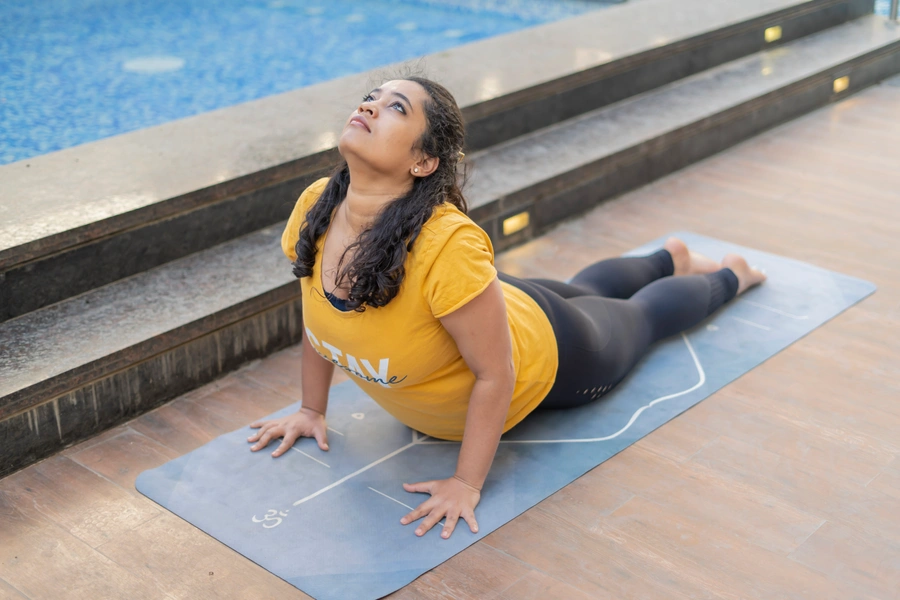
This gentle backbend activates the adrenal glands, opens the chest, and supports thyroid and reproductive function, especially helpful for metabolism and stress regulation.
Lie flat on your stomach with legs extended, tops of your feet resting on the mat.
Place your palms under your shoulders, elbows tucked in.
On an inhale, press lightly into your palms and lift your chest off the mat.
Keep elbows slightly bent and shoulders relaxed, away from your ears.
Hold for 30-60 seconds, then gently release.
Modifications:
For a softer version, place the forearms on the mat and lift just the chest.
Engage the lower abs to protect the lower back.
Each of these poses not only supports physical and hormonal health but also helps create the calm and clarity needed to make sustainable lifestyle changes. To ensure you do them right and maximize the benefits of your practice, book a 1-on-1 session today!
Yoga for PCOS can be beneficial when you tailor the practice to your specific symptoms, be it irregular periods or fertility issues. Here’s how to refine your routine for maximum hormonal support.
Trying to conceive with PCOS can be challenging, but fertility-focused yoga offers a natural way to increase your chances. These practices improve blood flow to the reproductive organs, regulate ovulation, and help balance hormones like estrogen and progesterone.
Here’s how fertility yoga works:
Targeted poses: Specific postures like Butterfly Pose, Legs Up the Wall, and Bow Pose open the hips, increase pelvic circulation, and stimulate the endocrine glands that support reproductive health.
Breathwork: Techniques such as alternate nostril breathing (Nadi Shodhana) calm the nervous system and reduce cortisol levels, creating a more fertile internal environment.
Visualization practices: Guided meditations focused on nurturing the womb and reproductive energy can reduce emotional blocks.
Cycle syncing: Tailoring your yoga practice to your menstrual cycle improves hormonal alignment and enhances results. Want to learn how to sync your practice with your cycle? Book a free 1-on-1 session with a fertility-informed yoga expert.
Irregular or absent periods are one of the most frustrating symptoms of PCOS. Yoga helps restore menstrual regularity by reducing stress, regulating the endocrine system, and bringing awareness back to your body’s natural rhythm.
Here are key practices to support cycle regulation:
Daily hormone-balancing sequences: Aim for 15–20 minutes of gentle yoga in the morning and 10 minutes of restorative poses in the evening to support your body’s natural clock.
Abdominal massage techniques: Certain yoga-based self-massage methods can improve blood flow to the uterus and ovaries.
Breathing exercises: Practices like Bhramari (bee breath) and Ujjayi breathing activate the parasympathetic nervous system, easing anxiety and cortisol spikes.
Consistent yoga gently re-aligns your hypothalamic-pituitary-ovarian (HPO) axis, the hormonal feedback loop that governs your menstrual cycle.
When practiced consistently, syncing your movement and breath with your body's natural cycles will help you notice changes that go beyond the mat—like clearer skin, better moods, improved digestion, and a more regular period.
Here are a few simple and effective routines:
15-20 minutes of energizing movement every morning can have a profound impact. Try these poses:
Cat-Cow Pose
Cobra Pose
Seated Forward Fold
Butterfly Pose
A calming and restorative evening sequence can significantly boost relaxation and happy hormones. Try these poses:
Legs Up the Wall Pose
Child’s Pose
Supported Bridge Pose
a) Menstrual phase: Restorative poses and deep breathing (no inversions)
b) Follicular phase: Core work and uplifting flows.
c) Ovulation: Heart openers and hip releases.
d) Luteal phase: Slow stretches, longer holds, and emotional grounding.
Some practices to include beyond the mat:
Eat anti-inflammatory foods like leafy greens, berries, turmeric, and flax seeds to support hormone health.
Balance meals with healthy fats, proteins, and fiber to stabilize blood sugar.
Practice mindful eating: yoga boosts body awareness, which can reduce overeating and cravings.
Establish a sleep routine by limiting your screen time before bed.
Prioritize sleep hygiene by keeping the room cool and dark, ensuring 7–9 hours of undisturbed sleep.
Manage stress daily with 5 minutes of breathwork or short meditations to lower cortisol.
Yoga offers a gentle yet powerful way to take control of PCOS symptoms, supporting your hormones, reducing stress, and bringing your cycle back into balance. Unlike intense workouts or medications with side effects, yoga aligns your mind and body, helping you feel more grounded, more aware, and more in tune with your health.
Book a free 1-on-1 session and experience the benefits of learning PCOS yoga with a certified instructor.
Yes, yoga is highly beneficial for PCOS management and is increasingly recommended by healthcare providers. It can help regulate hormones, improve insulin sensitivity, reduce stress-related cortisol levels, and support menstrual cycle regularity. Yoga also activates the parasympathetic nervous system, which reduces stress, helps balance the endocrine system, and reduces inflammation.
The most effective yoga poses for PCOS focus on hormone regulation, reproductive health, and stress reduction. These include:
Butterfly Pose: Stimulates reproductive organs and improves pelvic circulation.
Bow Pose: Boosts circulation in the pelvic region and releases tension from the abdominal organs.
Garland Pose: Boosts circulation and opens pelvic floor muscles.
Legs Up the Wall Pose: Improves circulation to reproductive organs.
Supported Bridge Pose: Relieves stress and aids in regulating menstrual cycles.
Locust Pose: Stimulates the thyroid and adrenal glands.
Child's Pose: Activates the relaxation response and reduces cortisol levels.
Seated Forward Fold: Improves metabolism and stretches the hips.
Cat-Cow Pose: Promotes hormonal balance by improving circulation.
Cobra Pose: Improves circulation in the pelvic region and stimulates the ovaries.
The key is consistent practice rather than difficult poses. Hold poses for longer periods (3-5 minutes) to allow the nervous system to shift into a healing state.
Yes, yoga can significantly support fertility and menstrual regularity in women with PCOS. Yoga helps reduce insulin resistance, balance hormones, and decrease stress - all crucial factors for ovulation and conception. Regular practice can help regulate menstrual cycles by supporting the hypothalamic-pituitary-ovarian axis. However, yoga works best as part of a comprehensive approach, including proper nutrition and medical care.
For PCOS management, aim for daily yoga practice, even if just 10-15 minutes. Consistency is more important than duration. A good routine includes:
Daily: 10-15 minutes of gentle poses and breathing exercises
3-4 times weekly: Longer 30-45 minute sessions
During symptoms: Extra gentle, restorative practices
Cycle-aware: Adjust intensity based on energy levels and menstrual cycle phase
Start with shorter sessions and gradually increase the duration. Listen to your body - some days may require gentler practice, especially during hormonal fluctuations.
While many women with PCOS find warm (not hot) yoga or regular yoga more sustainable and beneficial for hormone balance, hot yoga can also be practiced. However, it requires extra caution. The heat stress may affect already sensitive adrenal glands and could worsen fatigue or mood swings. So, if you choose hot yoga, stay well-hydrated, limit sessions to 2-3 per week, listen to your body, and stop if you feel dizzy or overly fatigued.
Yoga is an excellent complementary therapy for PCOS, but should not replace medical treatment. It works best alongside conventional care, helping to enhance the effectiveness of medical interventions and reduce side effects. Always consult your healthcare provider before making changes to medications or treatment plans. Yoga can significantly improve quality of life, reduce symptoms, and support overall health, but PCOS often requires medical management for optimal outcomes. The best approach combines medical care, lifestyle modifications including yoga, proper nutrition, and stress management.

Receive personalized guidance tailored to your unique fitness goals, live with a dedicated coach—no credit card required.